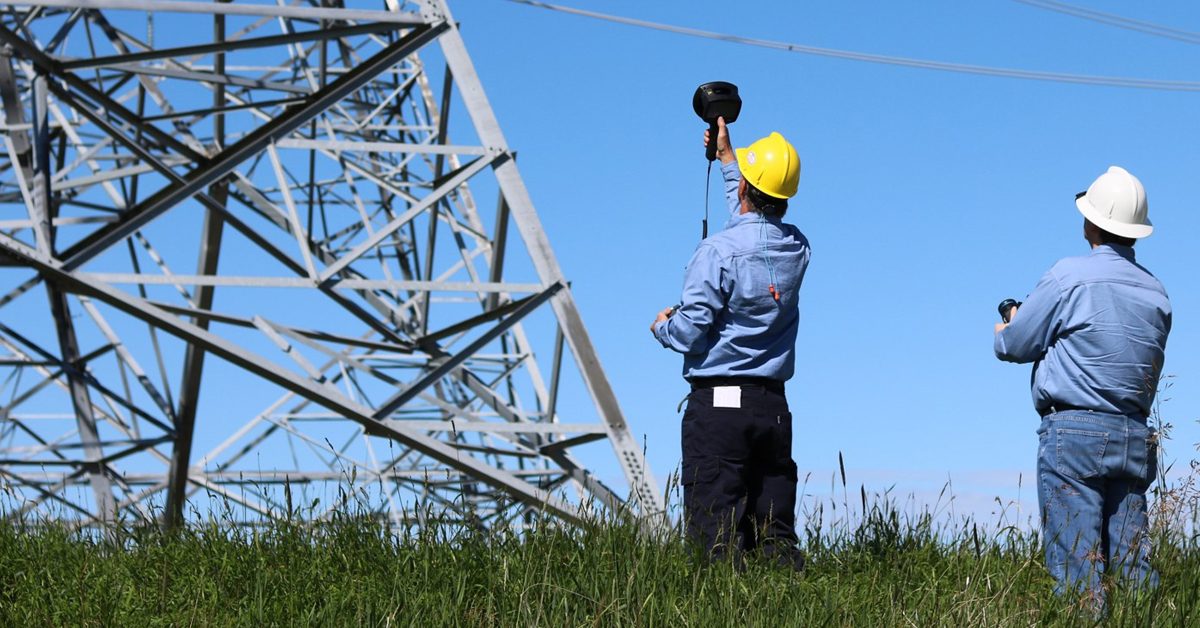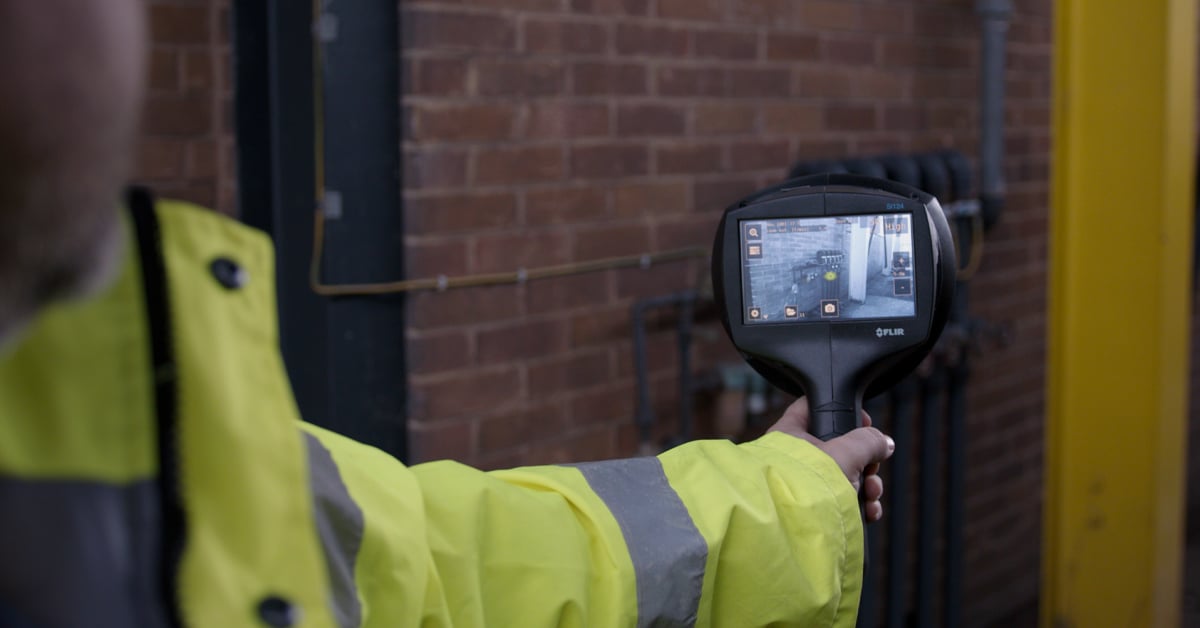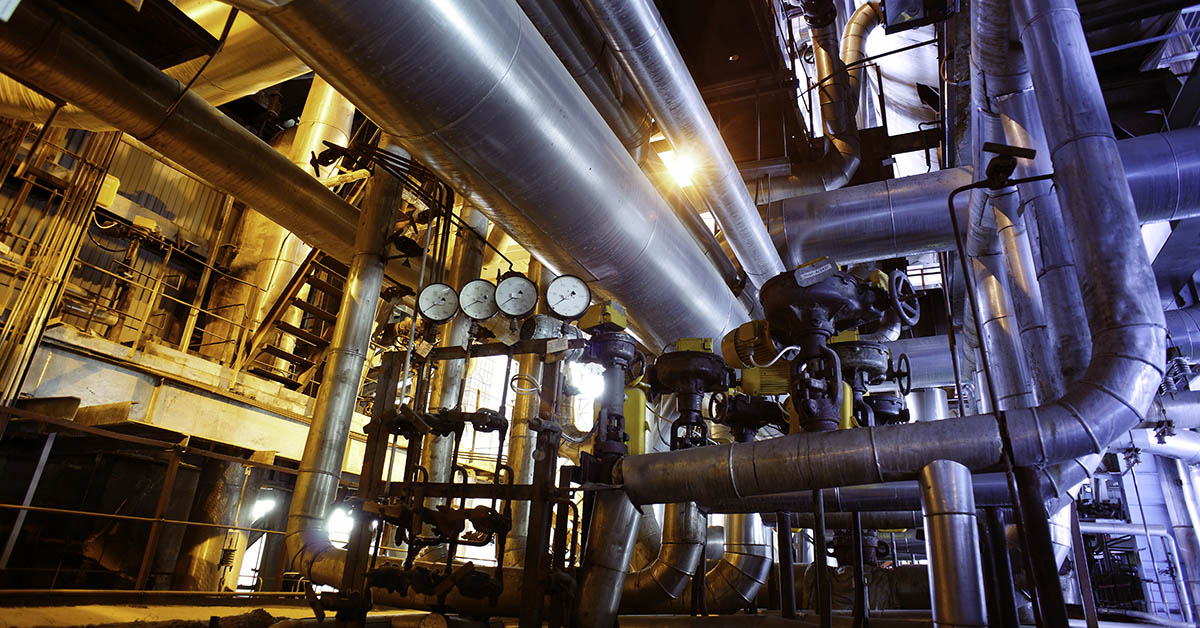Pulp and Paper Mills: How Acoustic Imaging Cameras Help Detect Compressed Air Leaks
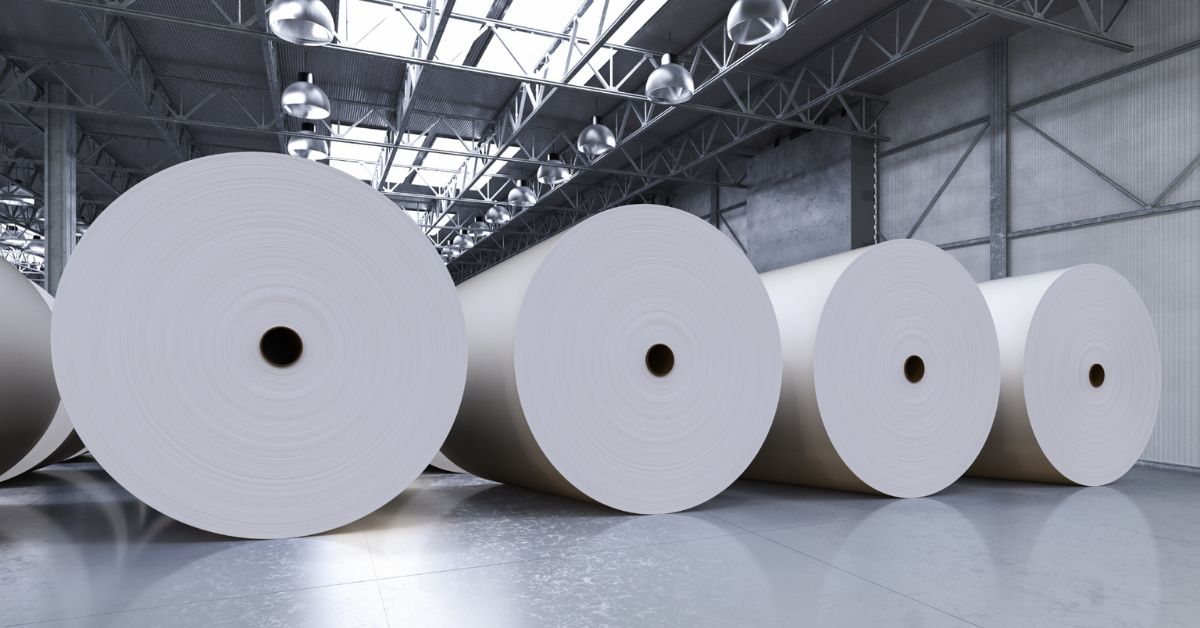
Pulp and paper mills are major industrial facilities that rely on compressed air throughout the entire process. Compressed air is used to separate and clean the raw pulp fiber, operate pneumatic tools, and even control valves. However, compressed air leaks can result in energy waste, reduced productivity, and increased operating costs. One of the most effective ways to detect compressed air leaks in pulp and paper mills is through the use of acoustic imaging cameras. In this article, we will explore how these cameras work and how they are helping pulp and paper mills detect compressed air leaks more efficiently.
Table of Contents
- Pulp and Paper Industry Challenges in a Changing Market
- The Importance of Compressed Air in Pulp and Paper Production
- The Importance of Detecting Compressed Air Leaks in Pulp and Paper Mills
- The Costs of Compressed Air Leaks in Pulp and Paper Mills
- How Much are Compressed Air Leaks Costing your Pulp and Paper Mill?
- The Challenges of Detecting Compressed Air Leaks in Pulp and Paper Mills
- The Limitations of Traditional Air Leak Detection Methods
- Where to Look for Compressed Air Leaks in Pulp and Paper Mills
- The Importance of Acoustic Imaging Cameras for Detecting Compressed Air Leaks in Pulp and Paper Mills
- Locating Compressed Air Leaks in a Paper Mill Using an Acoustic Imaging Camera
- Seven Benefits of Using an Acoustic Imaging Camera for Air Leak Detection in Pulp and Paper Mills
- Frequently Asked Questions
Pulp and Paper Industry Challenges in a Changing Market
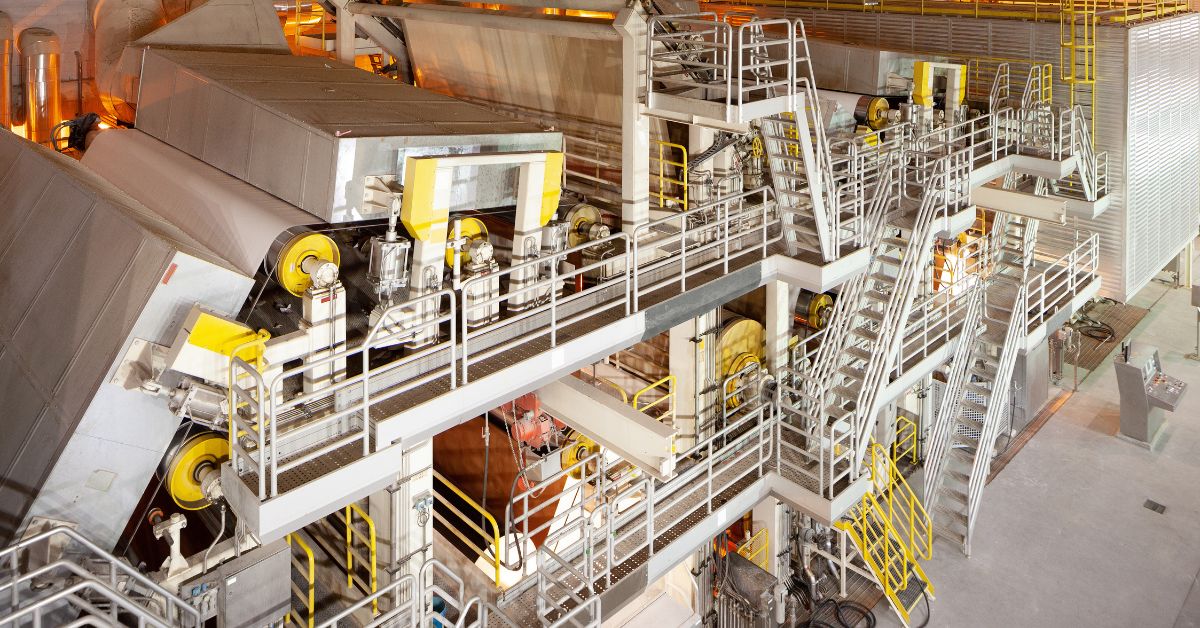
In 2021, the global consumption of paper and paperboard reached 408 million tons. Nowadays, the trend is shifting from traditional paper to more sophisticated products like high-end packaging solutions and specialty papers. To keep up with this ever-growing demand, pulp and paper mills need a constant supply of compressed air to maintain a near-continuous rate of production.
One of the biggest challenges in keeping up with demand is the efficient use of resources to ensure continued success amid an ongoing energy crisis. Energy expenses, particularly in compressed air systems, account for a significant portion of total production costs in the pulp, paper, and board industry, making it crucial to address these challenges promptly.
The Importance of Compressed Air in Pulp and Paper Production
Compressed air is a fundamental component of pulp and paper production, utilized to operate a diverse range of equipment and tools. Compressed air systems often operate continuously in manufacturing plants and contribute substantially to total energy expenses. In pulp and paper, energy usage can account for up to 20% of total manufacturing costs.
The Role of Compressed Air in Pulp and Paper Production
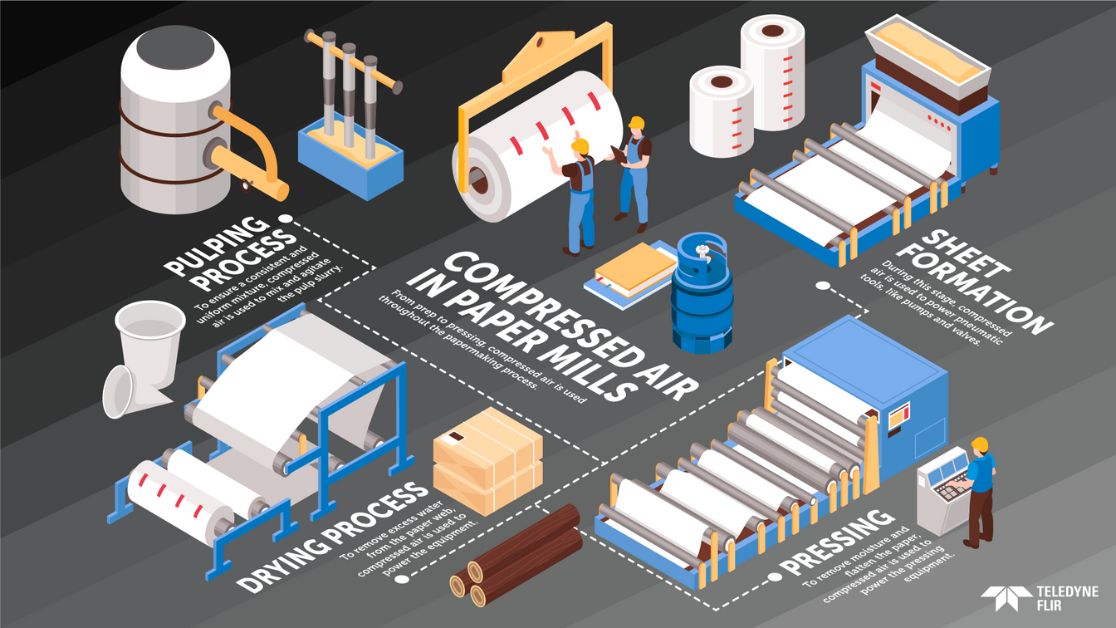
Compressed air is used in various stages of the paper production process, including:
Preparation of the pulp
To create paper, the process starts with preparing the pulp, which can come from various sources like wood, cotton, rice, or wheat straw. The pulp is then mixed with water and chemicals to create a slurry that will eventually become the paper. Compressed air is used to mix and agitate the pulp slurry to ensure a consistent and uniform mixture.
Creation of the sheet
The pulp slurry is then fed into a paper machine where it undergoes a series of processes to form the paper web. During this stage, compressed air is used to power various pneumatic equipment, like pumps and valves, which are necessary for regulating the flow of liquids and gases throughout the paper machine.
Water removal
After the paper-making process, large volumes of water are used, which need to be removed. This is accomplished through pressing and drying techniques. Compressed air is used to power the pressing process to remove excess water from the paper web and to facilitate the drying process, which helps to remove any remaining moisture from the paper and dry it efficiently.
Pressing
Once the paper web is formed, it undergoes a pressing process to remove excess water and flatten the sheet. This process can also add texture to the paper, depending on the pressing method used. Compressed air is used to power the pressing equipment, which helps to remove the moisture from the paper web and flatten it to the desired thickness.
Coating and treatment
Finally, any necessary coatings or treatments are added to the paper to enhance its performance or appearance. This can include adding finishes like gloss or matte, coatings that make the paper water-resistant or durable, or treatments that improve the print quality of the paper. Compressed air is used to power the equipment that applies these coatings and treatments to the paper.
It's worth noting that the paper-making process is highly technical and requires specialized knowledge and equipment to ensure the quality and consistency of the paper products. In a typical paper mill, a reliable and consistent supply of clean, dry compressed air is crucial to maintaining a near-constant production rate and ensuring high-quality paper products. Additionally, the paper-making industry has made strides in recent years to become more environmentally sustainable, with many mills implementing eco-friendly practices such as using recycled materials, reducing waste, and utilizing renewable energy sources.
The Importance of Detecting Compressed Air Leaks in Pulp and Paper Mills
The Costs of Compressed Air Leaks in Pulp and Paper Mills
Compressed air leaks can be a major source of energy waste and lost productivity in pulp and paper mills. Unfortunately, leaks are a common problem in these systems, compressed air systems typically lose 25-30% of their air to leaks. In some cases, these losses can even exceed 80%.
Such losses have significant economic consequences, including a 25-30% increase in energy costs, additional expenditures for compressor equipment to meet compressed air tooling requirements, a 30% reduction in compressor lifetime leading to higher replacement costs, and additional maintenance expenses for extra equipment.
How Much Are Compressed Air Leaks Costing Your Pulp and Paper Mill?
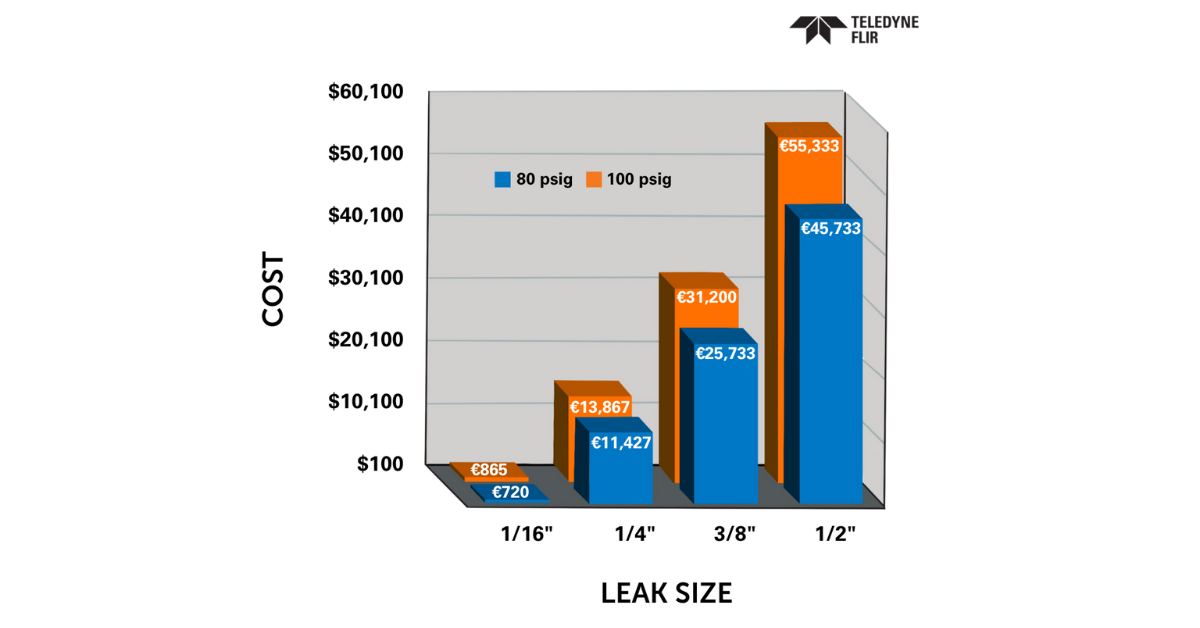
So, what exactly does that mean for costs in actual currency? The cost of compressed air leaks in pulp and paper mills can range from $720-$55,333 annually (dependent on leak size and total psig.)
Plant Service Magazine describes the cost of leaks in terms of their cumulative size. Based on running 24/7 and 8 cents per kWh, we can expect an improperly maintained compressed air system to cost a company many tens of thousands of dollars every year.
The costs of compressed air leaks go beyond just economic consequences. The loss of pressure can cause pneumatic tools to work less efficiently, which can impact the quality of the end product.
Furthermore, compressed air leaks can pose safety hazards in the mill. If a leak is not detected and repaired, it can release compressed air at high velocity, which can cause injury or damage to equipment.
The Challenges of Detecting Compressed Air Leaks in Pulp and Paper Mills
Pulp and paper mills are typically complex facilities that often operate 24/7, with various stages of the paper production process running simultaneously. This creates a challenging environment for leak detection, as there are numerous areas where leaks can occur. Additionally, the equipment used in the mills can produce high levels of noise, which can make it difficult to hear the sound of escaping compressed air using just your natural hearing.
The Limitations of Traditional Air Leak Detection Methods
Traditional leak detection methods, such as sniffers and leak spray, can also be limited in their effectiveness in detecting compressed air leaks in pulp and paper mills.
Sniffers are tools that use a detector probe or wand to detect leaks from a unit filled with a tracer gas. The sniffer is moved over the part and detects the leak as it passes over it. The sensitivity of the probe, the speed of movement, and the distance from the part all determine the accuracy of leak detection. Sniffing techniques can locate leaks on a part and can detect leaks as small as 10-7 mbar · l/s, depending on the tracer gas used. However, they are operator-dependent and can miss leaks, making them unsuitable for high volume production environments.
Leak spray involves applying a soapy solution to the suspected area of the leak and looking for bubbles but, again, this method can miss small leaks or leaks in hard-to-reach areas.
The most popular method for identifying air compressor leaks is a single-transducer ultrasonic acoustic detector. This electronic device can detect high-frequency sounds that indicate air leaks. However, the traditional method of using a single-transducer ultrasonic system is like using a spot temperature sensor for thermography inspections - it's functional, but can be time-consuming, and maintenance crews must often use them during scheduled downtime. Furthermore, to be effective, operators require extensive training and months of practice.
Where to Look for Compressed Air Leaks in Pulp and Paper Mills
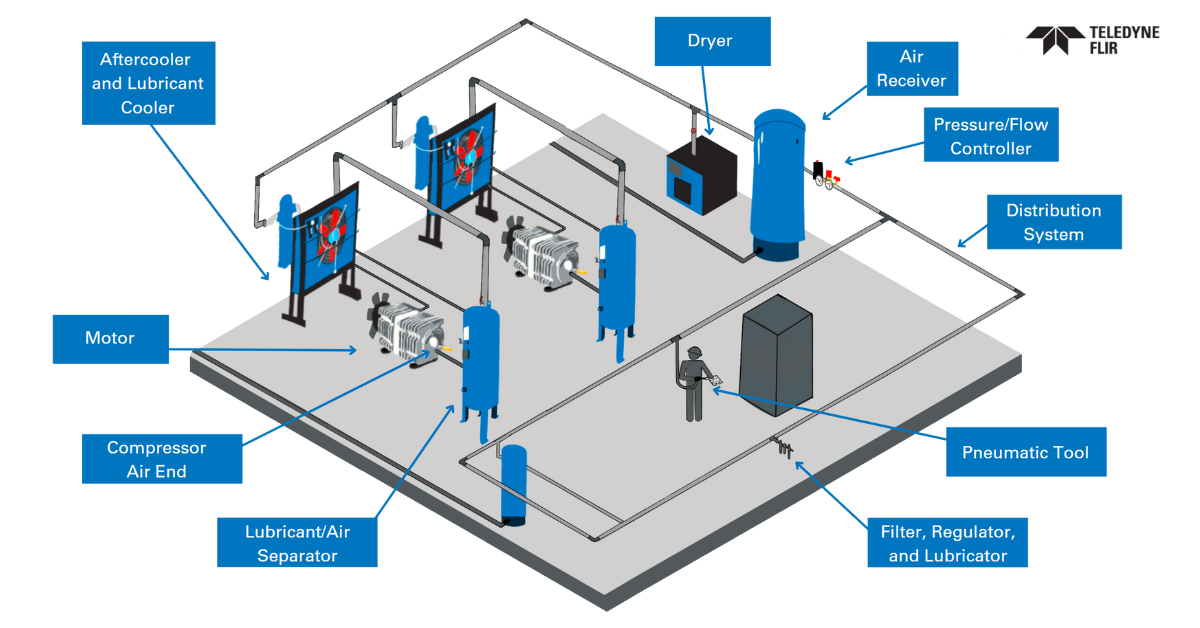
Compressed Air Systems have the potential to leak a lot because they are complex, with many connections. Potential areas leak sources for Compressed Air Systems:
- Couplings
- Hoses
- Tubing
- Fittings
- Pipe joints
- Quick-disconnects
- Filter/regulator/lubricator (FRL) units
- Condensate traps
- Valves
- Flanges
- Packings
- Thread sealants
- Point-of-use devices
- Open condensate traps
- Open shut-off valves
The above diagram shows the typical components in a compressed air system. Every one of these blue boxes represents a potential leak source.
The Importance of Acoustic Imaging Cameras for Detecting Compressed Air Leaks in Pulp and Paper Mills
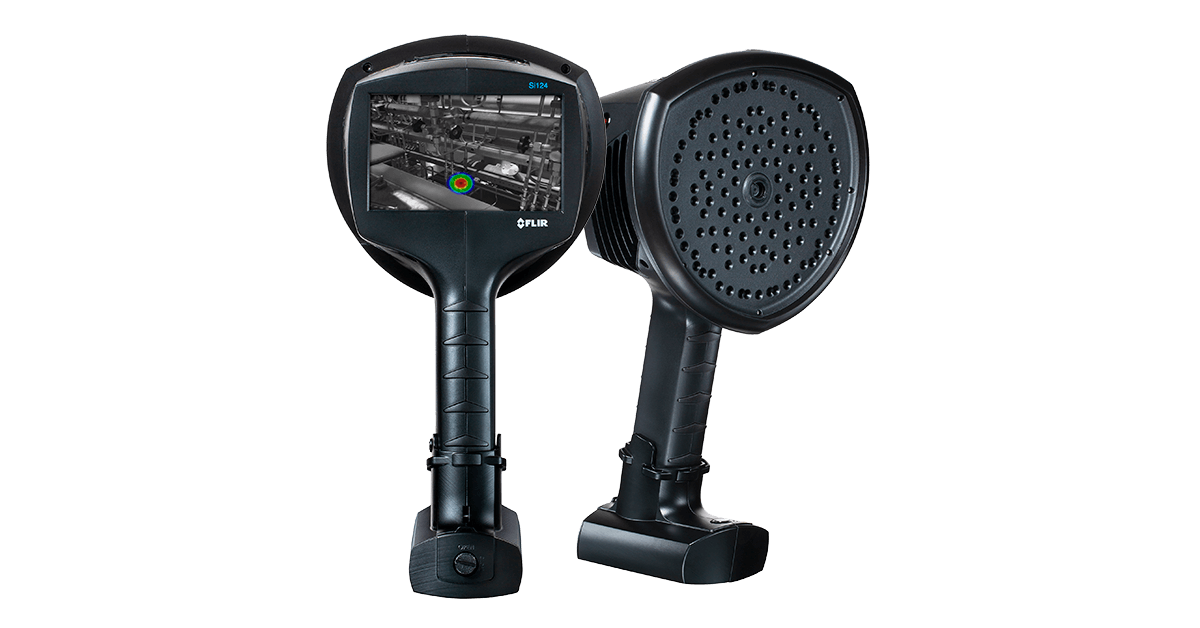
FLIR Si124 Acoustic Imaging Camera
Given the limitations of traditional leak detection methods, acoustic imaging cameras have emerged as a powerful and effective tool for identifying compressed air leaks in pulp and paper mills.
By using acoustic imaging cameras, operators can quickly and accurately identify the source of a leak with minimal training, and even in noisy and complex environments. This enables mills to take corrective action quickly, reducing energy waste, minimizing the risk of safety hazards, and optimizing the performance of their equipment.
What is Acoustic Imaging?
Acoustic imaging is a non-destructive testing method that uses sound waves to create images of the internal structure of an object or environment. It is used in a wide range of industries, including aerospace, automotive, and manufacturing, to identify defects, locate flaws, and monitor the condition of equipment.
How Acoustic Imaging Cameras Detect Compressed Air Leaks
Acoustic imaging cameras detect compressed air leaks by analyzing the sound waves generated by the escaping air. As the air rushes out of the leak, it creates a unique sound signature that is captured by the camera. The camera then creates a visual representation of the sound waves, enabling operators to quickly identify the location and size of the leak.
The Accuracy and Precision of Acoustic Imaging Cameras
Acoustic imaging cameras can precisely locate, and accurately measure compressed air leaks. They can locate the exact location of pinhole-sized leaks, enabling operations to quickly locate and repair leaks in order to minimize energy waste and reducing risks to safety. They can also measure leaks as small as 0.004 L/min so that users can prioritize repairs.
The Advantages of Using Acoustic Imaging Cameras in Pulp and Paper Mills
Acoustic imaging cameras offer several advantages for detecting compressed air leaks in pulp and paper mills. These advantages include:
Increased Energy Efficiency
Compressed air leaks can be a major source of energy waste in pulp and paper mills. By quickly identifying and repairing leaks using acoustic imaging cameras, mills can improve their energy efficiency and reduce their energy consumption. This results in lower operating costs and a reduced carbon footprint.
Improved Productivity
Compressed air leaks can also impact the productivity of pulp and paper mills by reducing the efficiency of pneumatic equipment. By identifying and repairing leaks quickly, mills can improve the performance of their equipment and increase their productivity.
Cost Savings
Detecting and repairing compressed air leaks using acoustic imaging cameras can also result in significant cost savings for pulp and paper mills. By reducing their energy consumption and improving the performance of their equipment, mills can lower their operating costs and increase their profitability.
To better visualise the total cost savings an acoustic imaging camera, such as the FLIR Si124, offers, FLIR provides a complimentary return-on-investment (ROI) calculator. This online tool enables the pulp and paper industry to estimate the potential energy savings from detecting and repairing air leaks, in relation to the cost of the camera itself.
Enhanced Safety
The presence of compressed air leaks in pulp and paper mills poses a significant safety hazard, especially when they are not detected and repaired promptly. As pointed out by Nex Flow, the danger associated with leaking hoses or connectors cannot be understated. In the event of a damaged and pressurized hose, an outward 'explosion' can cause severe injury. This sudden release of pressure can trigger the engagement or disengagement of a machine, putting both the operator and nearby individuals at risk of harm.
Acoustic imaging cameras enable mills to quickly identify and repair leaks, reducing the risk of safety hazards and improving the overall safety of their operations.
In summary, the advantages of using acoustic imaging cameras in pulp and paper mills include increased energy efficiency, improved productivity, cost savings, and enhanced safety. By investing in acoustic imaging technology, mills can optimize the performance and safety of their operations while reducing their environmental impact and operating costs.
Locating Compressed Air Leaks in a Paper Mill Using an Acoustic Imaging Camera
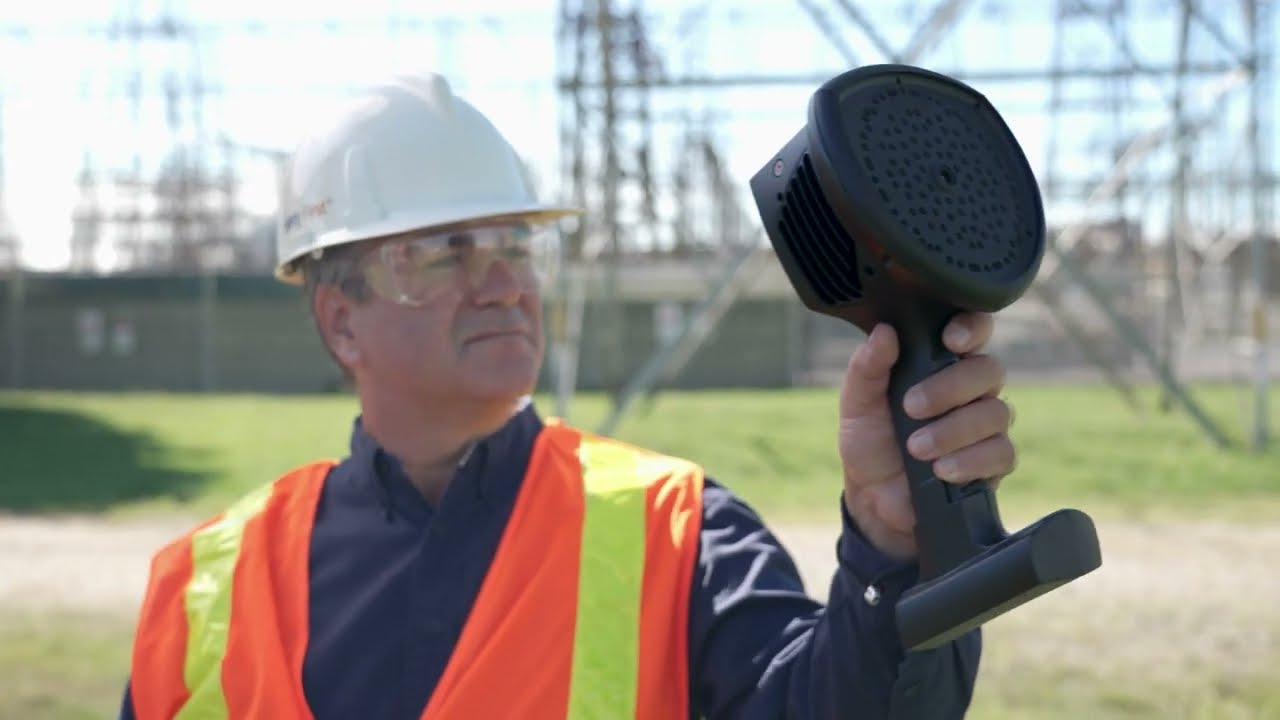
In contrast to traditional methods like sniffers and leak sprays, the FLIR Si124 ultrasonic air leak detector offers a much safer and faster alternative for maintenance personnel. Its advanced technology enables compressed air leaks to be identified accurately from a distance, eliminating the need for close proximity to suspected leak areas and heavy machinery, thereby reducing the risk of occupational hazards and promoting a safe working environment.
Featuring 124 microphones, the FLIR Si124 offers swift and precise leak detection and estimation of size and associated cost in real-time using AI-driven analytics. Its one-handed operation makes it user-friendly and compatible with any stage of a mill's maintenance cycle, including and not limited to inspecting dry-pipe sprinkler systems, steam systems, and vacuum systems. While its large-scale inspection capability ensures inspections can be carried out without interrupting production, thus further reducing costs.
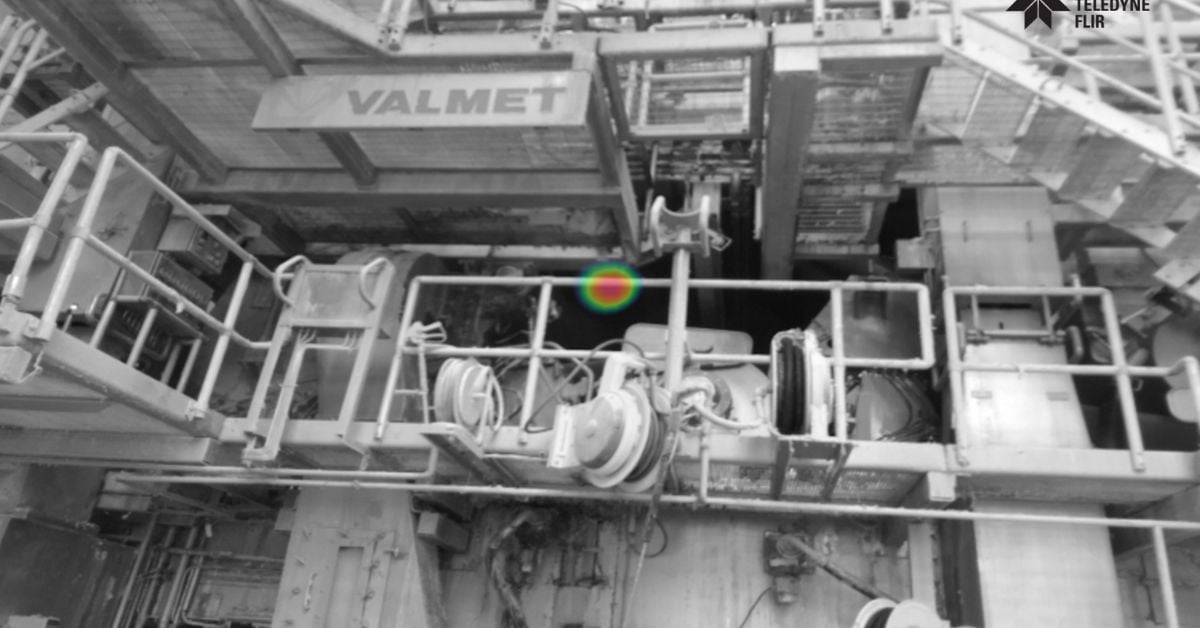
The FLIR Si124 detecting a compressed air leak
The FLIR Si124's software sets it apart from other acoustic imaging cameras. FLIR Thermal Studio Suite desktop software offers an added advantage for the pulp and paper industry by integrating thermal and acoustic imaging in a single report. This dual functionality enhances maintenance decision-making while eliminating the need to learn multiple software platforms.
In addition, using the free FLIR Acoustic Camera Viewer cloud service, image captures are rapidly uploaded over Wi-Fi and analyzed in-depth, facilitating quantification of compressed air leaks, including estimated leak cost. This feature enables maintenance departments to prioritize repairs and makes it easy for maintenance managers to demonstrate the impact of their team on a company's bottom line.
Moreover, the FLIR Si124 is extremely user-friendly and requires minimal training. By integrating it into regular maintenance routines, professionals can promptly identify issues and ensure continuous power and manufacturing operations.
Best Practices for Using Acoustic Imaging Cameras in Pulp and Paper Mills
To maximize the effectiveness of acoustic imaging cameras in detecting compressed air leaks in pulp and paper mills, it’s important to follow best practices in their use. These best practices include:
Conducting Regular Leak Detection Surveys
To ensure that compressed air leaks are identified and repaired in a timely manner, mills should conduct regular leak detection surveys using acoustic imaging cameras. The frequency of these surveys can vary depending on the size and complexity of the mill, as well as the age and condition of the compressed air system. However, it’s recommended that mills conduct surveys at least once per year to ensure that leaks are detected and repaired in a timely manner.
Proper Camera Placement
The effectiveness of acoustic imaging cameras in detecting compressed air leaks can be affected by their placement. To ensure accurate and reliable leak detection, acoustic imaging cameras should have a line of sight on areas where leaks are most likely to occur, such as at pipe joints or in hard-to-reach areas.
Seven Benefits of Using an Acoustic Imaging Camera for Air Leak Detection in Pulp and Paper Mills
- Saving money and ensuring operational continuity and uniform quality by locating hidden compressed air leaks in time.
- Scanning large areas quickly and pinpointing critical problems accurately for time, energy, and cost savings.
- Requiring minimal training and being easy to incorporate into maintenance cycles.
- Providing real-time results and actionable data for maintenance and repair plans through machine-learning-driven analytics.
- Allows professionals to complete their inspections 10 times faster than with traditional methods.
- Advanced analytics separates the noise signature of the leak from the background noise, allowing the detection of air leaks even in noisy environments.
- Enables condition-based maintenance in pulp and paper mills effectively and without halting operation because the non-contact camera works from an operational distance from 0.3 m (1.0 ft) up to 130 m (430 ft).
Conclusion
Compressed air leaks can be a significant source of energy waste, lost productivity, and increased operating costs in pulp and paper mills. However, by using acoustic imaging cameras to detect and repair leaks, mills can achieve significant cost savings, energy efficiency improvements, and safety enhancements. By following best practices for the use of acoustic imaging cameras, mills can ensure that their compressed air systems are operating at peak efficiency, maximizing the productivity and profitability of their operations.
For more information about acoustic imaging cameras or this application, please visit: www.FLIR.com/si124
Frequently Asked Questions
What is compressed air used for in pulp and paper mills?
Compressed air is used for a variety of purposes in pulp and paper mills, including operating pneumatic tools, controlling valves, and transporting materials.
What are the costs of compressed air leaks in pulp and paper mills?
Compressed air leaks can result in wasted energy, reduced productivity, and increased operating costs.
What is acoustic imaging?
Acoustic imaging is a non-destructive imaging technology that uses sound waves to create images.
How do acoustic imaging cameras detect compressed air leaks?
Acoustic imaging cameras detect compressed air leaks by listening for the sound of air escaping from a leak, which can be distinguished from background industrial noise.
What are the benefits of using acoustic imaging cameras in pulp and paper mills?
Using acoustic imaging cameras can result in increased energy efficiency, improved productivity, cost savings, and enhanced safety.
How do acoustic imaging cameras compare to traditional leak detection methods?
Acoustic imaging cameras are more effective than traditional leak detection methods, such as single-transducer ultrasonic inspections and visual inspections, because they can detect leaks that are difficult to locate using other methods.
Can acoustic imaging cameras be used to detect leaks in other types of industrial facilities?
Yes, acoustic imaging cameras can be used to detect compressed air and gas leaks in a wide range of industrial facilities, including tire manufacturing, and mining operations.
How much can pulp and paper mills save by using acoustic imaging cameras to detect compressed air leaks?
The amount of savings can vary depending on the size and complexity of the mill, but studies have shown that the use of acoustic imaging cameras can reduce compressed air consumption by up to 25%.
Are there any safety concerns associated with using acoustic imaging cameras in pulp and paper mills?
No, acoustic imaging cameras are safe to use in pulp and paper mills and do not pose any additional safety risks to workers beyond those associated with the operation of the compressed air system.
How often should pulp and paper mills conduct leak detection surveys using acoustic imaging cameras?
The frequency of leak detection surveys can vary depending on the size and complexity of the mill, as well as the age and condition of the compressed air system. However, it's recommended that mills conduct surveys at least once per year to ensure that leaks are detected and repaired in a timely manner.
